Decidedly uncomfortable for the first half hour pre-dawn, I may have gone numb for the second as the relatively flat valley floor riding continued. After seven I warmed as the sky lightened and the hills started. But I then climbed into a layer of fog and was chilled again. The stars disappeared from view as the increasing light revealed what I already knew – it was downright frosty.

 It was probably warmer among the mob of sheep waiting to lose their fleeces. Until they lost their fleeces.
It was probably warmer among the mob of sheep waiting to lose their fleeces. Until they lost their fleeces.
The level of fog was stark as the sun rose and slowly crept down the hills opposite.


No stopping at the Tiniroto Tavern this time, far too early. Realising I’d not ridden Ruakaka Rd from the south, I thought I’d better if I want to put it in this year’s HBAT. Ruakaka is very good and there were no vehicles to be seen; the most activity I saw was some farm-kids feeding their horses. The climb back up to Tiniroto was not as big as I remembered from bombing down it in February, that aided me in getting to the sea-level outskirts of Gisborne by noon. I’m glad I’ve found a couple of gravel alternatives through this way; the sealed Tiniroto Road has become rather boring to me now.
The gas station at Manutuke was the lunch stop, and a disappointing one at that. One thing in the pie warmer, and I had to ask what it was. Turns out a BBC is a Beef, Bacon & Cheese Roll – a glorified sausage roll that may have, to look at it, been kept warm for the best part of a week. The friendly roaming dog didn’t even show interest in it. An hour of lazy, flat valley floor riding with the sun on my back, no wind and no traffic was an easy start to the afternoon – before the lifestyle blocks turned to sheep and beef hill country, and pines started to appear.

Back on gravel, it was a bit of a mess. Strangely, there were work crews out on a Saturday fixing up the road from logging truck damage. I had quite a chat to one of them, trying to explain and counter their disbelief as to why I was riding a loaded bike up there. Ignoring roadsigns of questionable legality (the gates were open after all), deeper into the forest I climbed.
Pleased and surprised, I found swathes of native bush on the eastern side of the road. There was no-one to be found and I had the place and views to share only with wood pigeons. Glimpses of Hawke Bay to the south on occasion had me looking toward Mahia, where I hoped I’d make it before I ran out of energy. Ticking along casually, I was well aware I’d not ridden a loaded bike for six months and I may be out of gas before expected.
Dropping, I popped out in the middle of a section of highway I can’t remember ever being on – bit odd considering it’s only a hundred kilometres from home. A short section of that to Wharerata took me past a lookout I’d heard much mention of.
 Poverty Bay with Gisborne on the left, and Young Nicks Head in the centre.
Poverty Bay with Gisborne on the left, and Young Nicks Head in the centre.
Turning south, gravel ridge riding didn’t provide much in the way of views as it was mostly pine-lined. After ten kilometres, the road slid closer and closer to the Unformed moniker in Unformed Legal Road. With a little hike-a-bike around and over treefall, the fast-approaching sunset loomed larger in my mind. Out of the forestry and over a gate, I was into the farmland that would take me down to Mahanga.
My, where did all this mud come from?! Confronted with vast patches of it, suddenly I was going to be out well after dark. Oh well. However, it seems this is quite different to the wheel-binding mud of southern Hawke’s Bay. It was hardly slippery, and not at all sticky. Not having rained for a couple of days, when one couldn’t ride around it on the grass, it was negotiable. Slowed, but not too much, my crossing to the eastern (coastal) side of the hills was a continual balance of risk and reward – slow through the mud, or riding the narrow grass verge on the edge of the hill.
 As the sun sunk, I was pleased to find myself riding with this guy again.
As the sun sunk, I was pleased to find myself riding with this guy again.
 Off the ridge line, the mud lessened markedly and riding down the track quickened.
Off the ridge line, the mud lessened markedly and riding down the track quickened.
 Close to the coast now, looking north of Gisborne.
Close to the coast now, looking north of Gisborne.
 Dropping down to Mahanga as the sun sets on Mahia Peninsula – I was pretty sure I’d make it across the isthmus just before dark.
Dropping down to Mahanga as the sun sets on Mahia Peninsula – I was pretty sure I’d make it across the isthmus just before dark.

Indeed I did, and mightily pleased I’d not be spending the rapidly cooling night in a ditchbound bivy bag. I was pretty had it, and was surprised to find myself more than a little queasy – it hadn’t been at all hot, yet my classic end-of-a-long day symptoms appeared. Thankfully they are easily overcome and I rested well.
Closing the loop back to my car was a far simpler affair – only eighty-odd kilometres, all of which I knew, much of it lovely gravel backroads. Rest seemed more important than dragging myself up a big climb as the sun rose, so I slept in a little and watched the sun rise over the lagoon. Climbing Tunanui Road didn’t seem as steep from the east; even so, I was a little disappointed the Nuhaka store wasn’t open at nine – an ice cream would have gone down well.

Hereheretau Rd however had a far steeper climb riding it in the reverse direction. No matter, it was conquered and the cruise down alongside the Makaretu was sublime and the climb out of the valley was really quite nice.

Strange to be back at the car around midday, there was plenty of time for eating, driving home and even cleaning the mud off my bike. Seemed somewhat indulgent, a waste of good fine winter riding weather. Another successful HBAT scouting trip done, this year’s route is slowly coming together and I always love riding the hills of northern Hawke’s Bay.
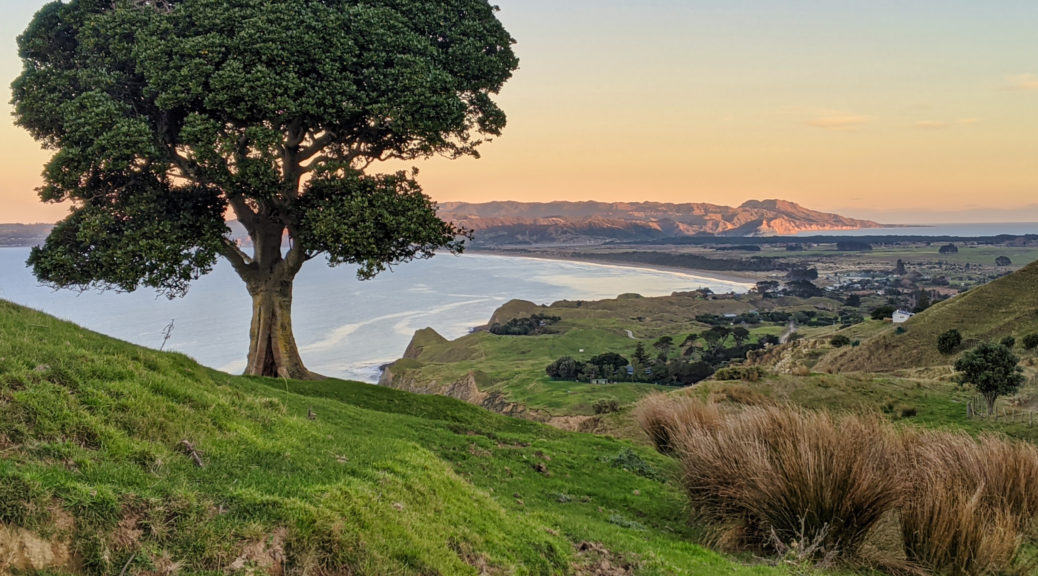
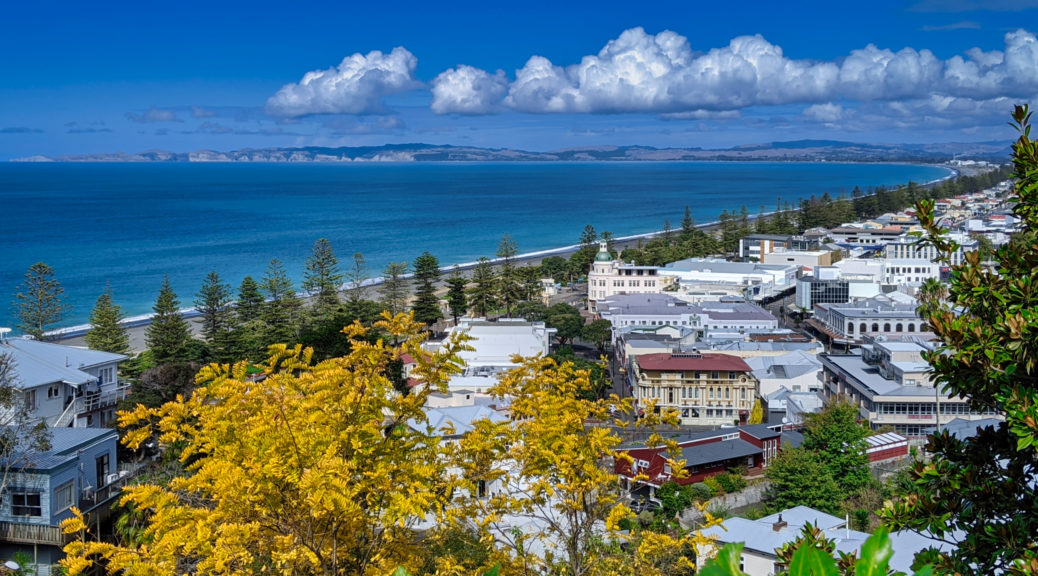
 Cape Kidnappers from the end of my street.
Cape Kidnappers from the end of my street. Guess I won’t be downtown for
Guess I won’t be downtown for Those three houses always catch my eye from afar.
Those three houses always catch my eye from afar. Looking back towards my little corner of the hill.
Looking back towards my little corner of the hill. There’s still a little bit of work for these tugs…
There’s still a little bit of work for these tugs… The cliffs I was on top of last week above the container ship.
The cliffs I was on top of last week above the container ship.
 Go get it!
Go get it! Got it.
Got it. Over Ahuriri fuel storage, the estuary, and Poraiti towards the Kaweka Ranges.
Over Ahuriri fuel storage, the estuary, and Poraiti towards the Kaweka Ranges. Those cliffs.
Those cliffs.
 A touch of the old sawtooth warehouses.
A touch of the old sawtooth warehouses. Indeed.
Indeed.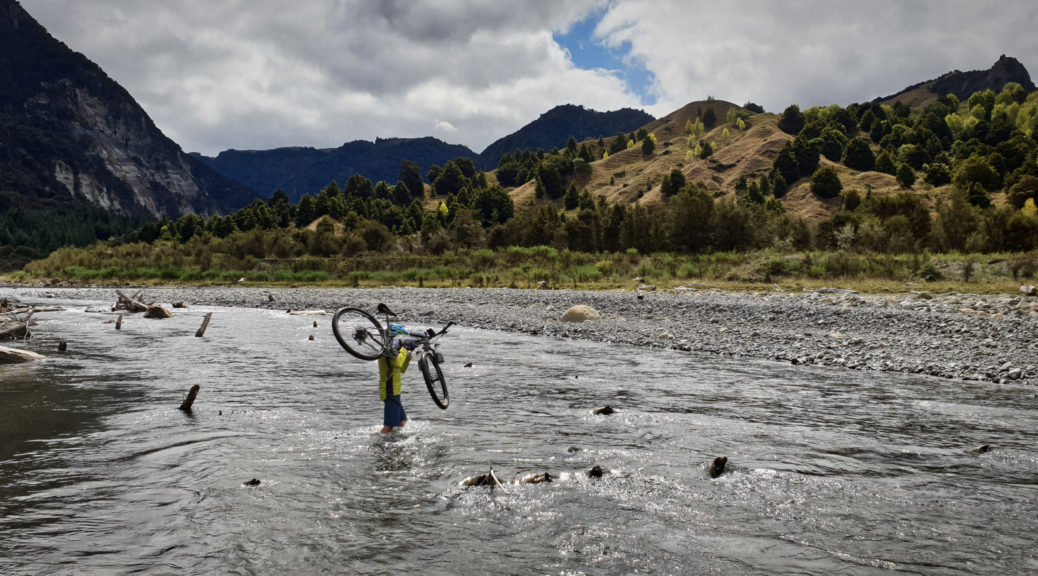
 There was actually some rain overnight, odd to see a wet road – it kept the dust away and only slowed us slightly.
There was actually some rain overnight, odd to see a wet road – it kept the dust away and only slowed us slightly. This feels like it should be the top, but it’s not.
This feels like it should be the top, but it’s not. Looking forward even more so to finding what’s at the end of the road – rather than turning onto Waitara Rd as on
Looking forward even more so to finding what’s at the end of the road – rather than turning onto Waitara Rd as on 
 There I go, looking even smaller than is usual.
There I go, looking even smaller than is usual. A brief level section for the final plunge to the Mohaka.
A brief level section for the final plunge to the Mohaka. Heading into the valley which would take us an hour to traverse from left to right and climb out of. The Mohaka running across the shot from left to centre, the Te Hoe joining it from the background. We were due to climb that grassy face in the middle-distance, far right of shot.
Heading into the valley which would take us an hour to traverse from left to right and climb out of. The Mohaka running across the shot from left to centre, the Te Hoe joining it from the background. We were due to climb that grassy face in the middle-distance, far right of shot. It really was looking a steep climb away from the Te Hoe.
It really was looking a steep climb away from the Te Hoe. Crossing the Mohaka, looking west and upstream.
Crossing the Mohaka, looking west and upstream. Down on the river flats, the track was gone.
Down on the river flats, the track was gone. Beyond the foliage, we could easily spy the dozer track that we were to take up the face.
Beyond the foliage, we could easily spy the dozer track that we were to take up the face.

 Ian led us across a bog and towards the steepness.
Ian led us across a bog and towards the steepness. Te Kooti’s Lookout just right of centre.
Te Kooti’s Lookout just right of centre. West up the Mohaka.
West up the Mohaka.  My game of “how far away is Panekiri?” continued – a bit further away this time.
My game of “how far away is Panekiri?” continued – a bit further away this time. Pausing at the Willowflat bridge, the river was low and we marvelled at the size of some of the boulders deposited in the flow.
Pausing at the Willowflat bridge, the river was low and we marvelled at the size of some of the boulders deposited in the flow. Looking over towards the early part of the route.
Looking over towards the early part of the route. Also, must get back to Ridgemount…
Also, must get back to Ridgemount…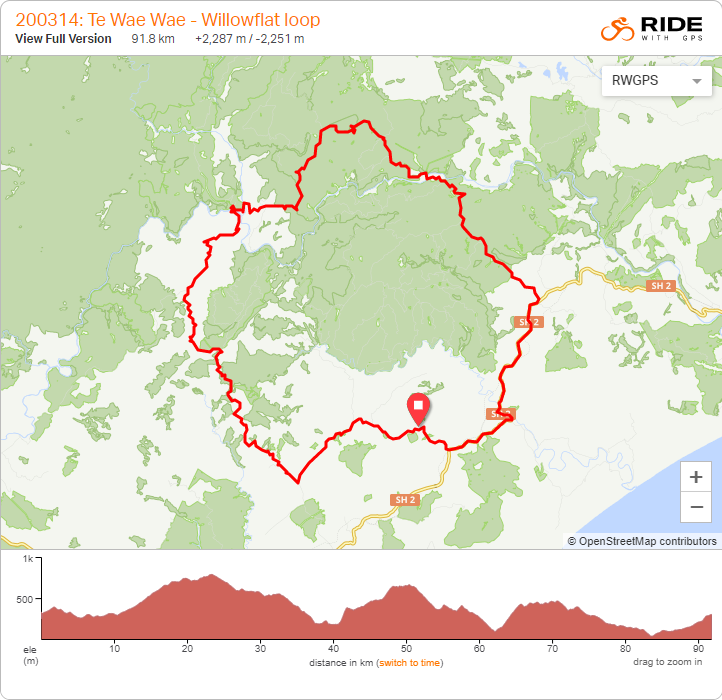
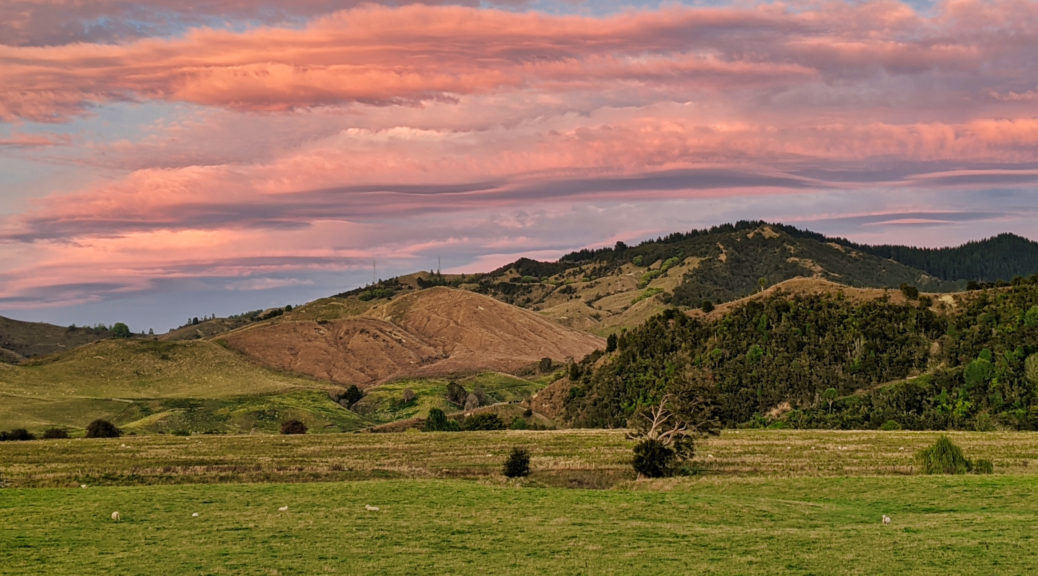
 Easy, flattish seal to start.
Easy, flattish seal to start.
 The Mangapoike, just before it flows into the Wairoa.
The Mangapoike, just before it flows into the Wairoa. Nearing the turn-off, I’d be into those hills soon – new roads for me!
Nearing the turn-off, I’d be into those hills soon – new roads for me!

 My obsession with seeing Panekiri Bluff from differing angles and distances continued. It’s so close here!
My obsession with seeing Panekiri Bluff from differing angles and distances continued. It’s so close here!
 I stopped most of the way down and chatted to a farmer moving some of his 35,000 sheep.
I stopped most of the way down and chatted to a farmer moving some of his 35,000 sheep. It’s quite a gateway to the hall – from the old bridge over the Waiau. Coincidentally, the grandparents of my host for the weekend used to live in that house.
It’s quite a gateway to the hall – from the old bridge over the Waiau. Coincidentally, the grandparents of my host for the weekend used to live in that house. Finally, I snapped a photo of this cute little house I’ve notice many times before.
Finally, I snapped a photo of this cute little house I’ve notice many times before. Towards where I’d spent the previous few hours.
Towards where I’d spent the previous few hours. No sheep this time –
No sheep this time –  I mean, look at it…
I mean, look at it… Over northern Hawke Bay to Mahia Peninsula.
Over northern Hawke Bay to Mahia Peninsula.

 Grass up the middle and very skinny road – only sealed as just around the corner were a lot of tight switchbacks dropping to the Hangaroa River.
Grass up the middle and very skinny road – only sealed as just around the corner were a lot of tight switchbacks dropping to the Hangaroa River.
